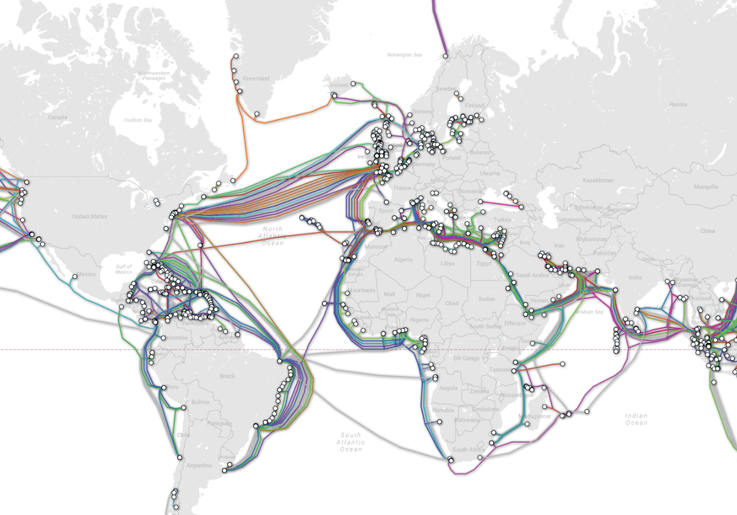
Below, I assess three primary potential threats: man-made destruction, systemic disruption, and the targeting of supporting infrastructure. And while the actors that might have an interest in – and the capacity for – disrupting Europe’s cables are relatively clear, the real problem comes from their ability to disguise their actions. While undersea cables prove this in spades, severe and overt attacks remain improbable during peace time. Connections to other regions such as South America remain scarce as traffic is mostly routed via North America.Ĭonnections that bring opportunities and benefits also entail exposure to risks and threats. Ten submarine cable systems connect the EU with Eastern and Southern Asia, almost all of which run through the Suez Canal into the Red Sea.

Other strong connections can be found between the EU and the Middle East and North Africa (MENA) region with a total of twenty-seven fiber optic connections in place. It can be assumed, however, that official numbers do not include classified (transatlantic) links built by intelligence agencies that are not plotted on public maps. Even after Brexit, that connection includes more than ten transatlantic links. The strongest connection in terms of cumulative transmission capacity can be found between the EU and North America. The EU’s external submarine connectivity to the rest of the world varies considerably in its strength and quantity depending on the destination. Island EU member states such as Malta and states with noncontiguous connections such as Finland rely on only 39 cables to ensure their connectivity. Three littoral member states – Germany, Croatia, and Poland – have no major undersea cables of their own, making them significantly dependent on those of fellow EU member states and allies. The remaining two thirds are submarine cables, which are not only more vulnerable but also more unevenly distributed. Although they go through states like Russia, hostile acts on them would amount to self-sabotage. One third of these are land-based cables that connect EU member states to non-member states in Europe.

In addition to powering our economy by facilitating over ten trillion euros of financial transactions daily, they enable our military command-and-control structures, drones, and other integrated and digital weapon systems vital for Europe’s defense.Ībout 250 active cables ensure the EU’s connectivity to the global internet. The lower costs and much higher capacities of undersea cables leave us firmly bound to them. Satellites, due to their comparatively high costs, are a partial alternative at best, suitable only for the most remote locations. From there, terrestrial cables and eventually submarine cables transfer our data over thousands of kilometers. Although we believe ourselves to be increasingly wireless, signals from our cable-free devices are in fact carried only as far as the nearest cell tower.

They are the essential, yet often overlooked, scaffolding of our interconnected digital world. Maritime cables handle more than 95 percent of global internet traffic. Ties That Bind: EU Submarine Connectivity This would also help Germany to develop its foreign policy role, showing that it takes the concerns of others seriously and, in practical ways, is willing to lead by example while serving collective interests. In doing so, Germany can help itself while bolstering mutual resilience through both better teamwork within the EU and enhanced, practical cooperation with NATO. Germany now has an opportunity to demonstrate a new “team power” approach by helping to address the concerns and direct vulnerabilities of others. This also includes countries like Germany, which have no major underwater cables of their own but are dependent on the interconnections with other EU states that host such infrastructure. The deliberate attack on the Nord Stream 1 and 2 pipelines in September 2022 brought the topic of submarine infrastructure to Europeans’ attention and highlighted how vulnerable to man-made threats the EU and its member states have become. Germany should push for closer EU cooperation with the new NATO initiative on submarine infrastructure, work with partners to strengthen Europe’s cable network, and propose to both increase and centralize EU repair and maintenance capabilities. This requires focusing on structural measures. To deal with the downsides of interdependence efficiently, the EU and its member states should bolster both mutual resilience and deterrence. However, the actors that may have an interest in – and the capacity for – disrupting them can disguise their attacks as accidents. Overt attacks on Europe’s cable connections remain improbable during peace time. Thus, it is significantly dependent on them.

Germany is not home to major submarine cable connections so it must rely on the cable connectivity provided by other EU member states to transfer data to other continents.


 0 kommentar(er)
0 kommentar(er)
